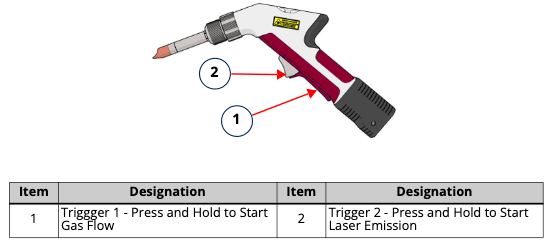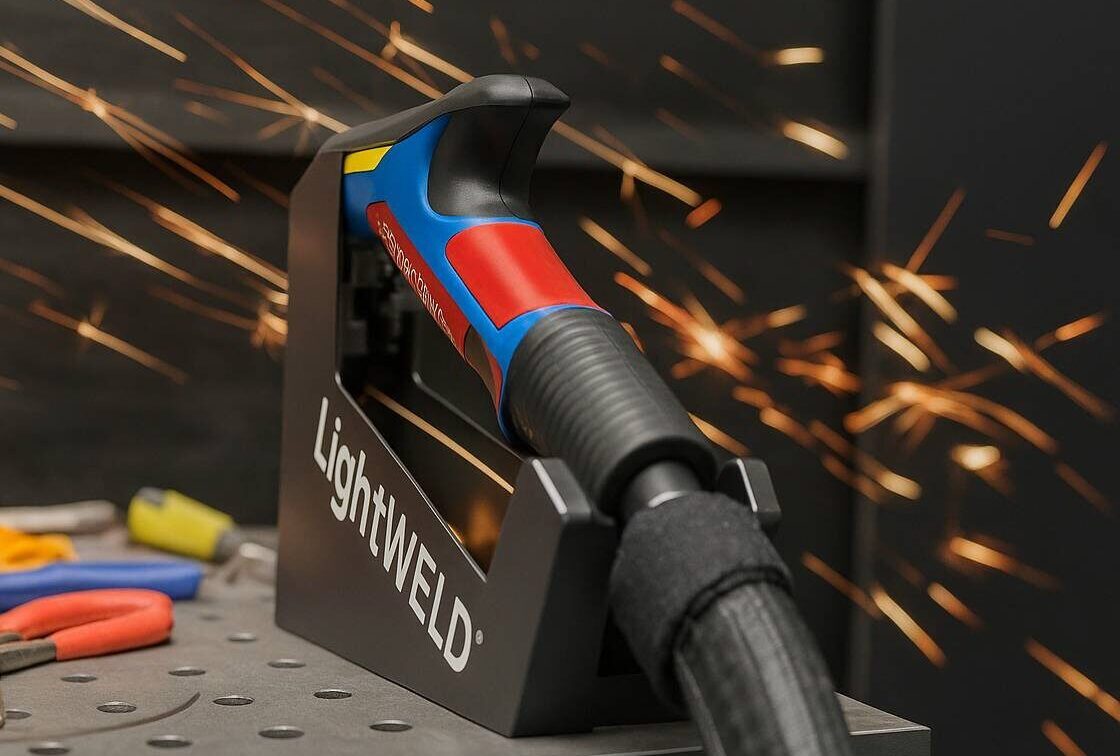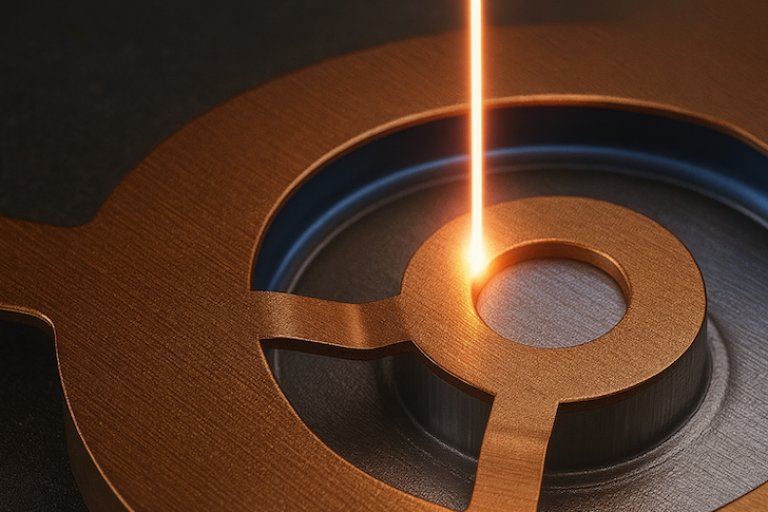The handheld laser welder market has exploded into the manufacturing scene; in fact, the market is projected to grow from USD 2.93 billion in 2025 to USD 4.23 billion by 2035, reflecting a CAGR of 4.4%.
Traditional welding methods still dominate many workshops, but laser welding technology has steadily advanced. These innovative tools revolutionize welding approaches, especially with challenging materials like titanium and quartz. Today’s best laser welder options deliver remarkable versatility, as they support both metal and plastic welding through high-speed operation that minimizes deformation. Chinese laser welder manufacturers have transformed the market dynamics by introducing competitive pricing and innovative technologies.
To help you find the solution that fits your specific needs, here’s how LightWELD matches up against other laser welding machines.
Understanding Handheld Laser Welders
“The LIGHTWELD™ 1500 handheld laser welding system enables dramatically faster welding and is easy to learn and operate.” — Linde plc, Global industrial gasses and engineering company
LightWELD represents the most important advancement in welding technology and offers up to 1500W of adjustable laser power for precise control. The system has 74 stored preset modes that help new welders become skilled at the technique within hours.
What is a LightWELD?
LightWELD excels as a handheld laser welding system that delivers high-quality, consistent results with materials of all types. The system has built-in pre-weld and post-weld cleaning functionality and wobble welding controls that work with up to 5mm of additional weld width. The system comes with 100 laser welding and cleaning presets developed to optimize results.
How handheld laser welding works
A high-energy laser beam focuses on a specific area between materials that need joining. The laser power density melts the metal without needing to strike an arc. The hand torch contains a moving mirror that wobbles the beam dozens or hundreds of times per second over the weld joint and melts base material on both sides. This process creates a very narrow, consistent fusion weld bead.
Key components and features
The core components of a handheld laser welder include:
- Laser Source: Uses fiber laser technology with a service life that runs beyond 10,000 hours and consumes less energy
- Cooling System: Uses high-performance military microcontroller technology to manage temperature reliably
- Welding Head: Features replaceable copper nozzles for different welding functions and weighs less than 1.5kg for easy handling
- Control Unit: Controls laser settings through an accessible touchscreen interface
A single cable delivers laser power, gas, and control connections to the gun. The system connects to a computer through ethernet to access advanced parameter settings for fine-tuning process parameters. This technology makes welding speeds up to four times faster than traditional MIG processes and reduces heat-affected zones while minimizing material distortion.
LightWELD vs Other Laser Welders
“In laser welding operations, the heat affected zone (HAZ) is much smaller and the total heat input is much lower than traditional welding operations.” — Titanova, Inc., Laser welding and cutting services provider
LightWELD models stand out from conventional laser welders in several ways. The latest models show clear advantages that make them a cut above traditional welding systems.
Power output comparison
The LightWELD 2000 XR puts out 2 kilowatts of laser power, which is 30% more than previous models. This boosted power creates 6X higher energy density than the original LightWELD 1500. Some stored modes can reach peak power outputs of 2500 watts for specific applications.
Welding speed and precision
LightWELD systems are no match for traditional methods when it comes to speed. These handheld laser welders work four times faster than standard TIG welding. The higher energy density lets newer models penetrate deeper into thicker materials while maintaining quality.
These systems’ precision comes from their focused laser beam technology. LightWELD creates smaller spot sizes that limit the heat-affected zone and reduce distortion in nearby areas. The system has 74 stored preset parameters that deliver consistent results with materials of all types.
Material compatibility
LightWELD shows remarkable versatility in handling different materials. The system works well with:
- Stainless steel and mild steel up to 8mm thickness
- Aluminum 3 & 5 series up to 8mm
- Titanium and nickel alloys up to 7mm
- Copper materials up to 3mm
LightWELD’s ability to join different metals of varying thicknesses sets it apart. The system needs minimal surface prep — metals don’t need much brushing or thorough cleaning before welding. The laser technology works great for vertical and upside-down welding, offering flexibility that traditional methods can’t match.
The system runs at 100% duty cycle at maximum laser power, which means consistent performance during long welding jobs. LightWELD’s wobble welding feature adds up to 5 millimeters of weld width, improving capability and making seams look better.
Safety Features and Training
Safety should be your top priority when using handheld laser welders. These Class 4 laser devices need strict safety protocols and detailed training programs.
Built-in safety mechanisms
Modern handheld laser welders come with multiple protection layers. LightWELD systems have a two-stage trigger mechanism (Figure 1) that will give a safe torch operation. The system has a weld safety detection feature that shuts off automatically when it doesn’t detect a weld plume. Cable safety interlocks also verify stable connections between the laser fiber and welding torch.

The system stays secure from unauthorized use with a key switch and has an emergency stop button for quick shutdown. Laser area interlock circuits stop operations immediately if someone walks into the welding zone.

Required operator training
ANSI Z136.1 standards say organizations using Class 4 lasers must have a Laser Safety Officer (LSO). The LSO makes sure safety protocols work and control measures stay effective. Operators learn several crucial skills through specialized training:
- Laser classification systems and associated hazards
- Safety protocol implementation
- Emergency response procedures
- Equipment maintenance guidelines
Protective equipment needs
You’ll need multiple layers of safety equipment. Operators should wear laser safety eyewear with an optical density (OD) of 7+ at 1070nm wavelength. A certified laser welding helmet adds more protection with specialized lenses that reflect and absorb infrared laser light.
Regular welding gear won’t cut it for laser operations. Here’s everything you need:
- Heat-resistant gloves and flame-resistant clothing
- ANSI Z87+ impact-tested safety glasses under the welding helmet
- Adequate ventilation systems to handle welding fumes
Your workspace needs specific safety features too. A designated Laser Controlled Area should be enclosed by four walls with a magnetic interlock I mentioned above. This enclosure stops laser light exposure up to hundreds of feet away and keep both operators and nearby workers safe. The enclosure needs to also have a roof if your facility’s ceiling has reflective ducts or pipes.
Real Applications and Results
Handheld laser welders show exceptional performance in a variety of materials. These ground examples showcase modern laser welding technology’s versatility and how it streamlines processes.
Laser welding aluminum projects
Laser technology effectively tackles aluminum welding’s unique challenges. The LightWELD XR system excels at welding 5000 series aluminum, including marine-grade materials, without hot cracking problems. Laser welding’s narrower heat path benefits even 6000 series aluminum, which typically cracks with conventional methods.
The system delivers impressive results:
- Full penetration welds on 5052 aluminum up to 6.35 mm thick
- Allows for welding dissimilar materials
- Thermal shrinkage and distortion stay minimal
Stainless steel applications
Laser welding shines when it comes to stainless steel performance. The LightWELD system handles stainless steel up to 6.35mm thickness with complete penetration. This capability serves essential roles in:
- Metal manufacturing industries
- Elevator component fabrication
- Stainless steel stove production
- Frame and window assembly
Industrial Sales & Manufacturing (ISM) tackled a challenging 14-gauge assembly project with laser welding. The technique eliminated extensive prefab fit-up needs and cut post-processing time by a lot. The technology’s precision lets users weld dissimilar metals that have different electrical conductivity.
Comparison Table
LightWELD | Other laser welders | |
Compliance with International Laser Safety | Fully compliant | Not compliant |
Plasma Sensor for Safety | Yes – Prevents accidental firing into open air | No – Can fire into open air |
Duty Cycle | 100% (Tested at max power for 5 hours before shipment) | Need to cool down after 1 min of operation |
Pre-Calibrated Welding Presets | Yes – 74 factory-calibrated presets | No – Requires manual tuning |
Gas Flow Control | Independent control, starts gas flow before weld | No independent control |
Wobble Width Visibility | Yes – Guide beam shows wobble width | No – Cannot see wobble width before welding |
Wire Feeder Performance | No coiling, easy feed/retract, tool-free adjustment | Prone to coiling, slack issues, difficult retracting |
Interface | Simple buttons, computer connection for advanced settings | Touchscreen, complicated navigation, difficult adjustments |
Power Consistency Over Time | Measured in watts, remains consistent over time due to most brilliant diodes on the market. | Power measured in %, degrades over time |
Weld Quality | Meets AWS, ASME, CWB, ISO standards | Produces oxidized welds, poor gas flow, inconsistent results |
Manufacturing & Service Location | Manufactured & serviced in the US | Manufactured in China |
Support & Spare Parts Availability | US-based dedicated support team | Limited support, requires international servicing |
Repair Turnaround Time | 3-5 days in US depots | Long repair time, no local service |
Application Expertise & Presets | Industry-leading application engineers & process expertise | No preset expertise, presets run too hot, no dedicated laser welding expertise |
Final Thoughts
LightWELD leads the handheld laser welding technology market with clear advantages over traditional systems. Its impressive 2000W power output and peak capabilities of 2500W help users weld four times faster than conventional TIG methods.
The two-stage trigger mechanism and automated safety detection systems make LightWELD a safer choice. These features give operators of all skill levels the confidence to work effectively.
LightWELD excels at handling materials like stainless steel, aluminum, titanium, and copper alloys. Apollo Machine’s repair work on oil sands equipment shows how LightWELD brings value to businesses.
LightWELD outperforms traditional methods with minimal heat-affected zones, less distortion, and better welding precision. The system comes with 74 stored presets and built-in cleaning functionality that make it perfect for professional welding operations. You can take a closer look at our range of laser welding solutions at mavweld.com/shop.
Welding technology continues to evolve toward precision and ease of use. LightWELD meets these demands today and sets new benchmarks for handheld laser welders.
FAQs
Q1. How do handheld laser welders compare to traditional welding methods? Handheld laser welders offer faster welding speeds, up to four times quicker than traditional TIG welding. They produce smaller heat-affected zones, resulting in less distortion and deformation of materials. However, they are more specialized and expensive compared to conventional welders.
Q2. What safety precautions are necessary when using a handheld laser welder? Safety is critical with laser welders. Users must wear proper laser safety eyewear with an optical density of 7+ at 1070nm wavelength, use a certified laser welding helmet, and work in a designated Laser Controlled Area with appropriate barriers. A Laser Safety Officer should oversee safety protocols and training.
Q3. What materials can be welded with a handheld laser welder? Handheld laser welders like LightWELD can effectively weld stainless steel and mild steel up to 8mm thickness, aluminum up to 8mm, titanium and nickel alloys up to 7mm, and copper materials up to 3mm. They are also capable of joining dissimilar metals with different thicknesses.
Q4. How does the cost of a handheld laser welder compare to traditional welders? Quality handheld laser welders are more expensive than traditional welders, with prices ranging from $18,000 to $40,000 for reputable brands. In contrast, a good TIG welder will be under $10,000. However, the production output of a laser welder is 4x higher than that of a TIG welder.
About The Author

Emma Ascott is a journalist specializing in technological subjects, with a bachelor’s in Journalism and Mass Communication from Arizona State University. She has worked for Arizona PBS, nuclear fusion company TAE Technologies, and Future of Work publication Allwork.Space. Emma is the PR lead at MavWeld.



